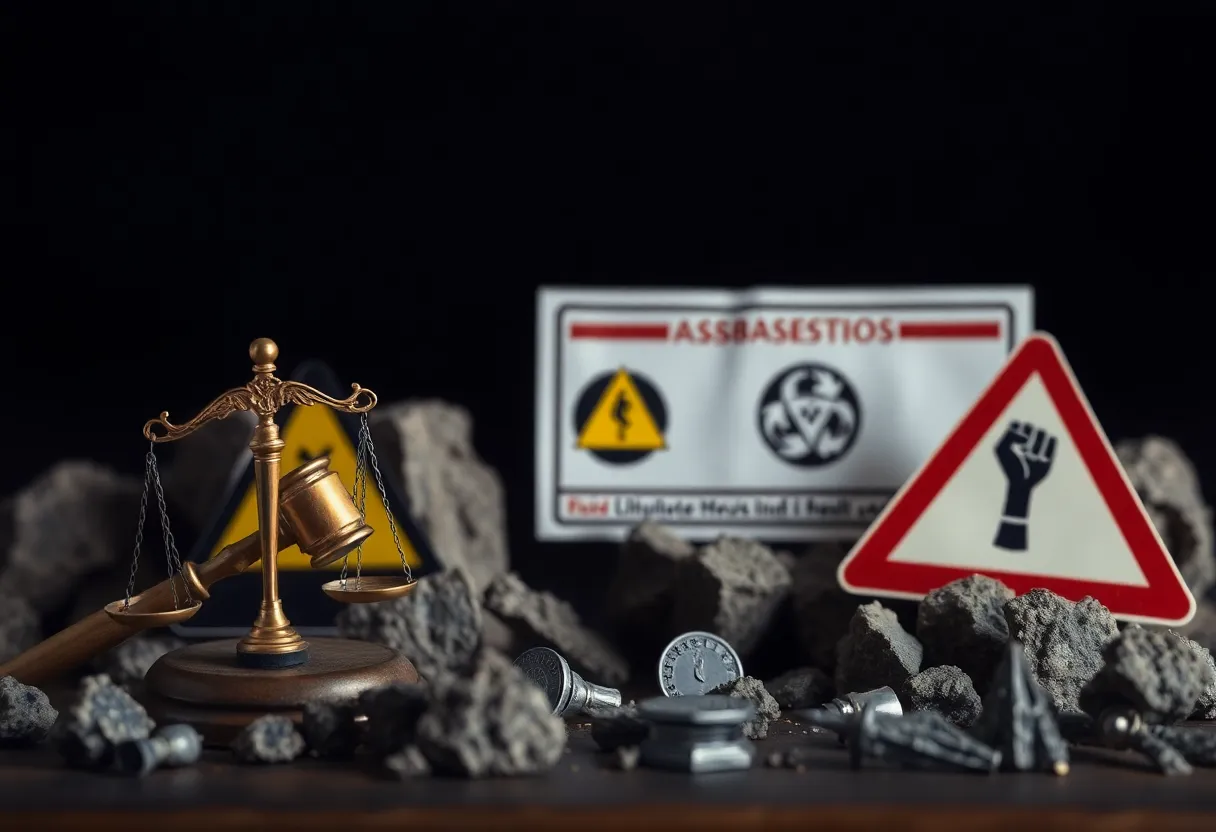News Summary
A Connecticut jury ruled against Johnson & Johnson, awarding $15 million to lung cancer victim Evan Plotkin, who linked his diagnosis to the company’s baby powder. The case raises serious questions about corporate responsibility and product safety, highlighting the dangers of asbestos exposure. As legal battles progress, the implications for consumer safety and corporate accountability are profound.
Johnson & Johnson Faces Tough Questions in Mesothelioma Case
A Connecticut jury recently ruled against Johnson & Johnson (J&J), awarding $15 million in compensatory damages to lung cancer victim Evan Plotkin, who claims an asbestos connection through the company’s widely used baby powder. The verdict comes as a shocking reminder of the long shadows cast by asbestos exposure, sparking serious conversations about corporate responsibility and product safety.
An Alarming Diagnosis
Evan Plotkin’s diagnosis of lung cancer has been linked to his lifetime use of Johnson & Johnson’s baby powder. The implications of his case go beyond personal health as he also used the product on his children. Allegations against J&J include strict liability, negligence, and failure to warn consumers of the potential dangers hidden within their product. These claims raise alarming questions about what companies know and when they choose to inform their customers.
The Legal Battle Heats Up
Following the jury’s decision, Plotkin’s attorney has taken the fight a step further, requesting that the judge impose $30 million in punitive damages against J&J. This hefty sum is backed by state law that allows punitive damages to be capped at twice the amount awarded for compensatory damages. The attorney argues that this figure is justified given the serious nature of the case.
However, J&J’s legal team is pushing back. They argue that the company acted without an “evil motive” and therefore should not be penalized to the full extent of the law. The defense claims that the presence of asbestos in their product was not concealed, and asserts that their actions do not amount to the level of “wanton and malicious injury” required for punitive damages as established by Connecticut’s legal precedents.
A Question of Ethics
J&J’s defense highlights a crucial point: the distinction between negligence and malicious intent. The Connecticut Supreme Court’s stance from 1983 emphasizes that punitive damages should be reserved for cases of “evil motive and violence.” With $15 million already awarded, the jury’s findings of J&J’s liability leave room for debate on how far punitive measures should extend, given the potential implications for both the company and others that deal with similar allegations.
The Impact of Asbestos
This case isn’t merely a legal skirmish; it underscores the broader crisis of asbestos-related diseases, including malignant mesothelioma. Victims of such illnesses must navigate both the physical and emotional turmoil that arises from a diagnosis. As lawsuits like Plotkin’s continue to unfold, they highlight the desperate need for companies to ensure their products are safe and transparently marketed. The stakes are high, not only for the victims but for society at large in setting precedents for accountability in corporate practices.
Next Steps in Court
As the judge considers the arguments from both sides, the conclusion of this case may set a critical precedent for future lawsuits involving asbestos exposure. It raises critical questions about how corporations manage their products and the information they share. For Plotkin and many like him, this battle is not just about financial recompense but about justice, accountability, and the need for companies to uphold the highest standards of consumer safety.
For those diagnosed with malignant mesothelioma or related conditions, the journey towards justice can be challenging. Victims and their families are encouraged to seek support through established advocacy groups that specialize in assisting with such cases. Holding corporations accountable is essential for fostering change and ensuring safer products for future generations.
Deeper Dive: News & Info About This Topic
HERE Resources
Recent Court Rulings Spark Controversy in Asbestos Litigation
Health Risks Surface After Eaton Fire: Asbestos Found in Burn Areas
The Hidden Danger in Beauty Products: Talc and Asbestos Contamination
Baie Verte’s Abandoned Asbestos Mine Undergoes Transformation
Justice Secured for Mesothelioma Victim Thomas R. Sorrentino
Warren Buffett’s Company Under Fire for Talc Sales Linked to Mesothelioma
Mesothelioma: A Deadly Legacy of Asbestos Exposure
Startling Discoveries Reveal Lack of Awareness About Asbestos Risks
Asbestos Continues to Haunt Veterans: A Hidden Epidemic
Controversial Proposal to Reintroduce Asbestos Throws Australia into Debate



















